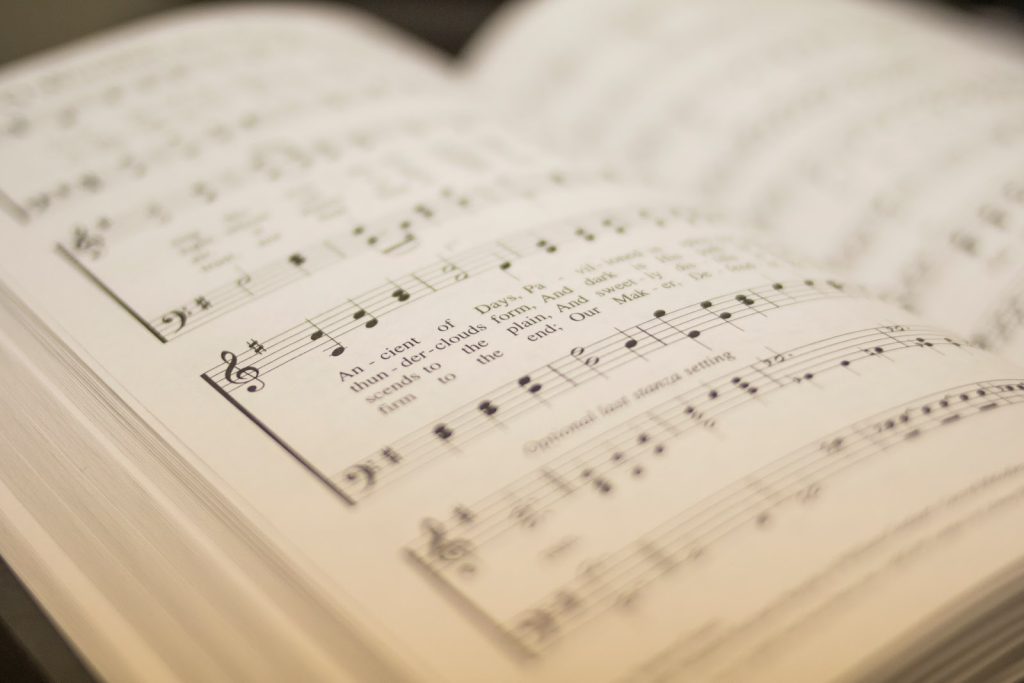Looking for lyric writing tips? Lyrics are the soul of a song, conveying emotions and stories that resonate with listeners. Whether you’re an aspiring songwriter, a seasoned musician, or simply a music enthusiast curious about the magic behind your favorite tunes, understanding the art of lyric writing is a journey worth embarking on.
In this guide, we’re bringing lyric writing tips and insights to help you transform your thoughts and feelings into powerful song lyrics. From finding inspiration in the mundane to mastering the delicate balance of rhythm and rhyme, we’ll explore the techniques that make lyrics resonate and linger long after the song has ended.
Let’s unleash the power of your words and set your stories to the melody of imagination!
Table of Contents
#1 Stick with a Concept or Theme
Working with a concept or theme is foundational in lyric writing. It involves identifying the central idea or emotion that will drive your song, serving as its backbone.
This concept could stem from a wide range of sources, such as personal experiences that evoke strong emotions, keen observations about life and relationships, or even abstract ideas and philosophical musings.

By focusing on a specific theme, you create a coherent narrative or emotional journey in your lyrics, giving your song a clear direction and purpose.
However, this thematic approach has to be coherent and apparent throughout the song. It can’t just be a collection of random thoughts, but a well-crafted expression of a particular idea or feeling that resonates with your audience.
#2 Create Vivid Imagery
Use descriptive language and metaphors to evoke mental pictures and emotional responses in the listener. This technique transforms abstract emotions into tangible scenes or narratives, making the song more relatable and impactful.
By employing vivid imagery, you invite listeners into the world of the song, allowing them to see, feel, and experience the story or emotion you’re conveying. Sensory details (sights, sounds, tastes, smells, textures), metaphors, and similes are powerful tools in this process, drawing comparisons that illuminate the song’s themes in creative and unexpected ways.
More on Imagery Examples
#3 Keep It Simple and Relatable
Simplify your language and connect with universal emotions to make lyrics accessible to a broad audience. Avoid complex jargon and focus on common experiences or feelings.

This approach allows listeners from diverse backgrounds to find something in your song that resonates with them. Relatable lyrics create an emotional bond between the song and the listener. Simple, yet powerful words can often leave a lasting impact.
#4 Use Rhyme Judiciously
Rhymes can enhance the musicality of lyrics. However, too many rhymes compromise the song’s meaning. Rhymes should flow naturally and complement the message.
Don’t force yourself to rhyme. Forced rhymes can distract listeners and detract from the song’s authenticity. Strive for a balance where rhymes enhance the lyrical rhythm without dominating it.
#5 Follow the Rhythm and Flow
The rhythm of the lyrics should match the song’s beat and melody. Consider syllable count and stress patterns to ensure smooth integration with the music.
Rhythmic lyrics can elevate the overall musical experience, making the song catchy and appealing. Adjust the pacing and flow of words to maintain harmony with the underlying tune. A well-rhymed song is easier to follow and sing along to.
#6 Incorporate Repetition
Think of repetition as your chorus’s secret sauce. It’s like a catchy phrase that sticks in your head, highlighting the main ideas and feelings of your song. But remember, there’s a fine line between catchy and repetitive.

When you get it right, repetition isn’t just about words; it’s about creating a hook that your audience feels and remembers. It’s all about striking that perfect balance to make your song feel like an old friend to your listeners.
#7 Speak What Your Heart Says
When it comes to lyrics, nothing beats the honesty and rawness of your own experiences and emotions. Pour your heart out on the paper. Let your personal stories and feelings shine through your words.
This sincerity not only touches your audience but also makes your song more powerful and real. After all, a song that comes straight from the heart speaks directly to the hearts of others.
#8 Edit and Refine
Editing your lyrics is like polishing a gem. It’s not just about fixing mistakes. It’s about fine-tuning your words, making sure they flow just right, and ensuring that every line packs a punch.
Cut out the fluff and sharpen those metaphors. Remember, sometimes the difference between a good song and a great song is all in the editing.
#9 Experiment with Perspectives
Don’t be afraid to walk in someone else’s shoes when you write. Try seeing the world from a different angle. This change of perspective can add layers to your lyrics, making them more intriguing and multifaceted. It’s a great way to keep your writing interesting and prevent it from becoming too predictable.
Writing from different perspectives can add depth to your lyrics. This approach broadens the scope of your storytelling. It’s a great way to keep your writing interesting and prevent it from becoming too predictable.
#10 Seek Inspiration
A master songwriter can find inspiration everywhere. Whether it’s in the music you listen to, the books you read, or even in the everyday world around you, pay attention and capture the emotions with lyrics.

Broaden your horizons. Let different genres of music, various forms of literature, and the simple act of people-watching fuel your creativity. You’d be surprised how often a great idea comes from the least expected places. Keep your mind open, and let inspiration flow from all corners into your lyrics.
Wrapping It Up!
The art of lyric writing is as diverse and dynamic as the songs themselves. From the power of repetition that creates memorable hooks to the authenticity that resonates from writing from the heart, each element plays a pivotal role in bringing your song to life.
Remember, lyric writing is not just about stringing words together; it’s about telling a story, evoking emotions, and connecting with your audience on a deeper level. So keep these tips in mind, let your creativity flow freely, and most importantly, enjoy the process of crafting your unique lyrical masterpiece.
Happy songwriting!


